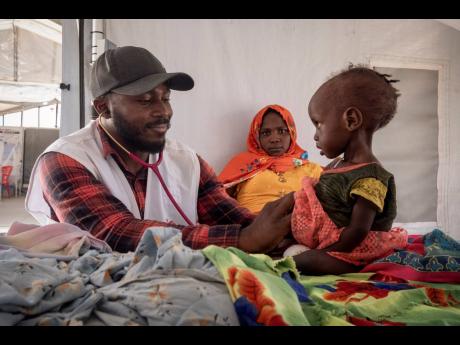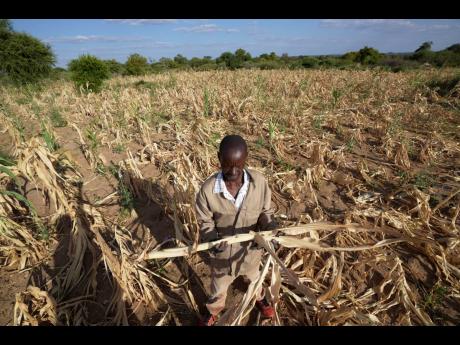Hunger numbers stubbornly high as global crises deepen – UN report
1 in 11 people worldwide faced hunger in 2023, 1 in 5 in Africa
RIO DE JANEIRO, BRAZIL:
Around 733 million people faced hunger in 2023, equivalent to one in 11 people globally and one in five in Africa, according to the latest State of Food Security and Nutrition in the World (SOFI) report published recently by five United Nations specialised agencies.
The annual report, launched this year in the context of the G20 Global Alliance against Hunger and Poverty Task Force Ministerial Meeting in Brazil, warns that the world is falling significantly short of achieving Sustainable Development Goal (SDG) 2, Zero Hunger, by 2030. The report shows that the world has been set back 15 years, with levels of undernourishment comparable to those in 2008-2009.
Despite some progress in specific areas such as stunting and exclusive breastfeeding, an alarming number of people continue to face food insecurity and malnutrition as global hunger levels have plateaued for three consecutive years, with between 713 and 757 million people undernourished in 2023 – approximately 152 million more than in 2019, when considering the mid-range (733 million).
Regional trends vary significantly: the percentage of the population facing hunger continues to rise in Africa (20.4 per cent), remains stable in Asia (8.1 per cent) – though still representing a significant challenge as the region is home to more than half of those facing hunger worldwide – and shows progress in Latin America (6.2 per cent). From 2022 to 2023, hunger increased in Western Asia, the Caribbean, and most African subregions.
If current trends continue, about 582 million people will be chronically undernourished in 2030, half of them in Africa, warn the Food and Agriculture Organization of the United Nations (FAO), the International Fund for Agricultural Development (IFAD), the United Nations Children’s Fund (UNICEF), the UN World Food Programme (WFP), and the World Health Organization (WHO). This projection closely resembles the levels seen in 2015 when the Sustainable Development Goals were adopted, marking a concerning stagnation in progress.
FINANCING TO END HUNGER
This year’s report’s theme, ‘Financing to end hunger, food insecurity and all forms of malnutrition’’, emphasises that achieving SDG 2 Zero Hunger requires a multi-faceted approach, including transforming and strengthening agri-food systems, addressing inequalities, and ensuring affordable and accessible healthy diets for all. It calls for increased and more cost-effective financing, with a clear and standardised definition of financing for food security and nutrition.
The heads of the five UN agencies, FAO Director General QU Dongyu; IFAD President Alvaro Lario; UNICEF Executive Director Catherine Russell; WFP’s Executive Director Cindy McCain; and WHO Director General Dr Tedros Adhanom Ghebreyesus write in the report’s foreword: “ Estimating the gap in financing for food security and nutrition and mobilising innovative ways of financing to bridge it must be among our top priorities. Policies, legislation and interventions to end hunger and ensure all people have access to safe, nutritious and sufficient food (SDG Target 2.1), and to end all forms of malnutrition (SDG Target 2.2) need significant resource mobilisation. They are not only an investment in the future, but our obligation. We strive to guarantee the right to adequate food and nutrition of current and future generations.”
As highlighted during a recent event in the High-Level Political Forum at UN headquarters in New York, the report underscores that the looming financing gap necessitates innovative, equitable solutions, particularly for countries facing high levels of hunger and malnutrition exacerbated by climate impacts.
Countries most in need of increased financing face significant challenges in access. Among the 119 low- and middle-income countries analysed, approximately 63 per cent have limited or moderate access to financing. Additionally, the majority of these countries (74 per cent) are impacted by one or more major factors contributing to food insecurity and malnutrition. Coordinated efforts to harmonise data, increase risk tolerance, and enhance transparency are vital to bridge this gap and strengthen global food security and nutrition frameworks.


